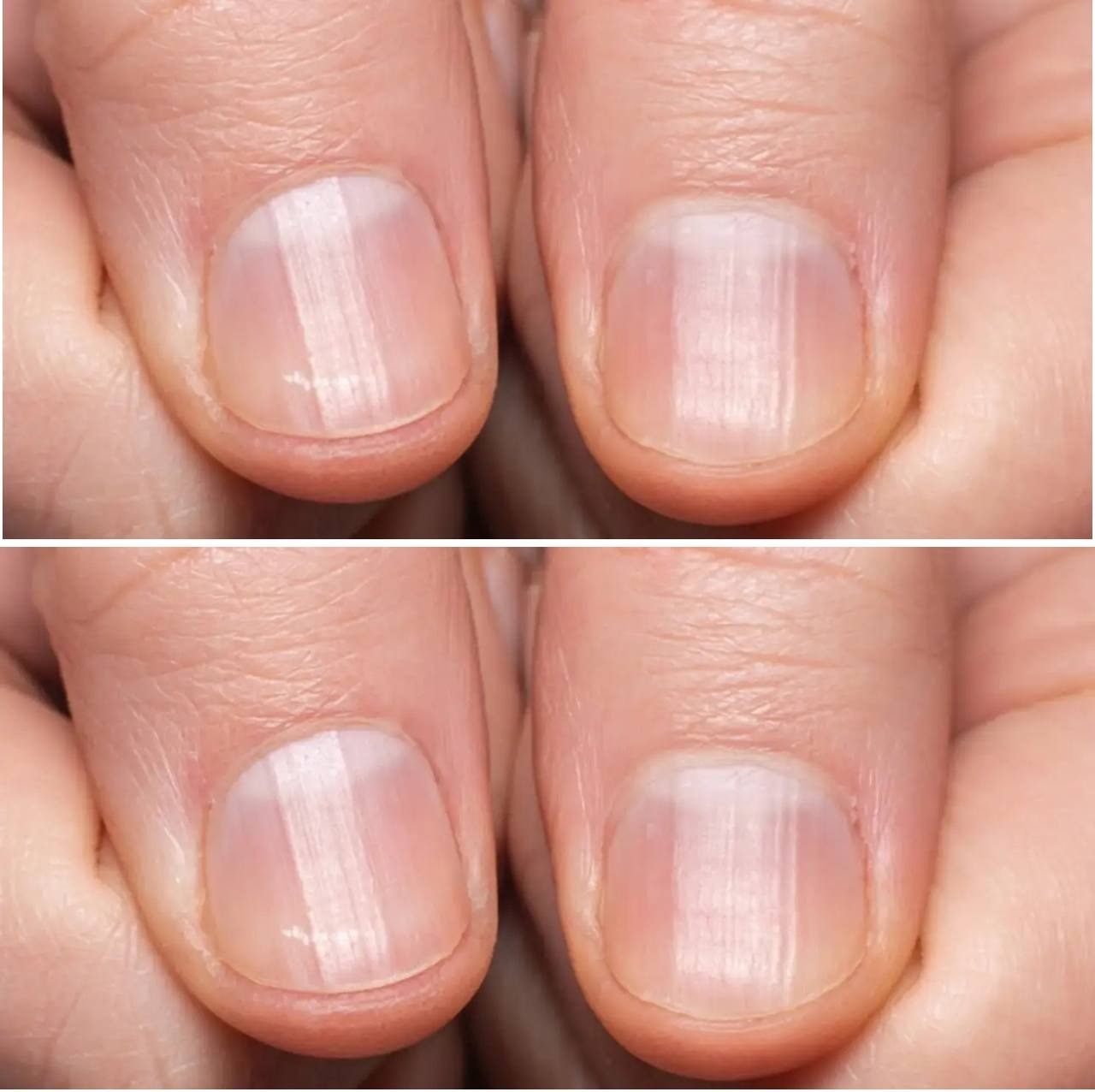2. Nutritional Deficiencies
The appearance of stripes, especially discolored ones, may signal deficiencies in essential nutrients such as iron, zinc, calcium, or vitamins like B12. For example, white stripes or spots on the nails can indicate a lack of zinc or calcium, while brittle nails with ridges may suggest a deficiency in biotin or other key nutrients.
3. Dehydration
Dehydration can cause vertical ridges and dryness in the nails. Ensuring adequate water intake and using moisturizers or cuticle oils can help improve nail health.
4. Underlying Medical Conditions
Certain systemic diseases can manifest through changes in the nails. For instance:
- Anemia: Pale nails with ridges may indicate low iron levels.
- Liver Disease: Muehrcke’s lines or yellowing of the nails can be linked to liver dysfunction.
- Kidney Disease: Nail discoloration or ridges may occur due to impaired kidney function.
- Thyroid Disorders: Brittle nails with ridges or discoloration can be a sign of hypothyroidism or hyperthyroidism.
5. Trauma or Injury
Physical trauma to the nail bed, such as hitting your finger or excessive filing, can lead to ridges or discoloration. These changes are usually temporary and resolve as the nail grows out.
6. Skin Conditions
Conditions like psoriasis, eczema, or lichen planus can affect the nails, causing ridges, pitting, or discoloration. If you notice persistent changes alongside skin symptoms, consult a dermatologist.
7. Serious Health Concerns
Dark stripes or streaks under the nails should never be ignored, as they can sometimes indicate subungual melanoma, a rare but aggressive form of skin cancer. Similarly, splinter hemorrhages may point to cardiovascular or autoimmune disorders.
When to See a Doctor
While many cases of striped nails are benign, certain signs warrant medical attention:
- Dark or black stripes that appear suddenly.
- Horizontal ridges accompanied by fatigue, weight loss, or other systemic symptoms.
- Persistent discoloration or deformities that do not improve over time.
- Pain, swelling, or infection around the nail bed.
If you notice any of these symptoms, schedule an appointment with your healthcare provider or a dermatologist for a thorough evaluation.
How to Improve Nail Health
If your striped nails are due to lifestyle factors or minor deficiencies, there are steps you can take to promote healthier nails:
- Maintain a Balanced Diet:
Include foods rich in vitamins and minerals, such as leafy greens, lean proteins, nuts, seeds, and whole grains. Consider supplements if recommended by your doctor. - Stay Hydrated:
Drink plenty of water to keep your nails and skin hydrated. - Moisturize Regularly:
Use hand creams or cuticle oils containing nourishing ingredients like vitamin E, shea butter, or jojoba oil. - Avoid Harsh Chemicals:
Limit exposure to nail polish removers with acetone and wear gloves when handling cleaning products. - Protect Your Nails:
Avoid biting your nails or using them as tools to open packages. Keep them trimmed and filed to prevent breakage.
Conclusion
Striped nails may seem like a minor cosmetic issue, but they can sometimes reveal deeper insights into your overall health. Whether caused by aging, nutritional deficiencies, or underlying medical conditions, paying attention to these changes can help you address potential problems early. By maintaining a healthy lifestyle and seeking professional advice when needed, you can ensure that your nails remain strong, smooth, and vibrant—a true reflection of your well-being.
So, the next time you notice stripes on your nails, don’t ignore them. Take a closer look—they might just be trying to tell you something important about your body! 🌟

